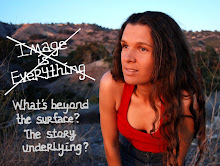


Below is the link to the above "treatment attempt" for World's Easiest Catch.
In class, Michael Hanrahan explained to us that a "treatment" for a film is a one-to-two page summary of the film project. A short-and-sweet pitch that can grab attention *snap* like that! In terms of the structure, I'm assuming within the first 1-3 sentences you would have a very catchy, summarized hook to get the reader into the document (and as a cheating mechanism, I would stamp the treatment with some form of catchy, prominent logo, as I did with my pre-production package). I would answer in a nutshell the four primary questions every single human being wants to know when trying to grab one's attention: (1) What's this about? (2) Why should I care? (3) Why should I believe you? Either (a) I have pre-existing credentials, so believe me like a subgod... or (b) The data and evidence I am presenting speaks for itself (4) And now that I'm hooked, but with a diminishing attention span to lengthy, repetitive stimuli, what are you going to do to sustain my long-term interest in this project/system?
I guess in question (4), you would go into unique and quirky technique and content that would pulse the entire story with originality.
It's really important that you keep treatments short. Like a "pitch." You may have to pitch a project at any time, any place, when you least expect it. I remember Michael saying that you may run into some notable executive in an elevator, and you do indeed have 15 seconds of his time, as the doors rapidly slide closed... slide open... and out he steps. It is as quarantined an environment you can get! The closest to a long road trip in a car! What will you do to prick his information-bombarded ear? It's best to write treatments like this. More like an extended abstract for scientific papers, except you have the license to creative verbage and visualization, not to mention the license to stimulate emotion beside rational thought. But don't overdo emotions at the sacrifice of accuracy: this is called sensationalization. And don't underdo it either, because then your treatment truly becomes an "abstract" of a boring scientific paper!
Michael gave several sample treatments (as I have posted in a previous blog), but they had various different structures, some more consistent than others. Yet the above conclusions are what seem to be more humanly universal.
So, what happened? What went wrong with the above treatment? By the time I was required to write the treatment, I was very much embedded and involved in my rock crab project. No one else in the class even STARTED their film, except for me. In this circumstance, the students had an advantage because a short, one-page summary of a project would be easy to bullshxt. For me, I struggled tremendously because I knew too much, and everything I knew was disorganized in my brain! I ended up adding too much detail. I ended up creating a document that's like a hybrid between a treatment and a preproduction package. Oh dear. This is a case when working too hard and knowing too much actually backfires. I received a "B" on this work.
I was determined to do the treatment right, so on my own, I rewrote the treatment (next blog) and was able to marginally get it down to two pages. I submitted the treatment to Michael, just to get some constructive feedback, and I actually had my treatment returned with a grade of "A"! This was most certainly not expected... and I take it Michael appreciated that I went out of my way to repeat concocting a treatment until I did it right.












No comments:
Post a Comment